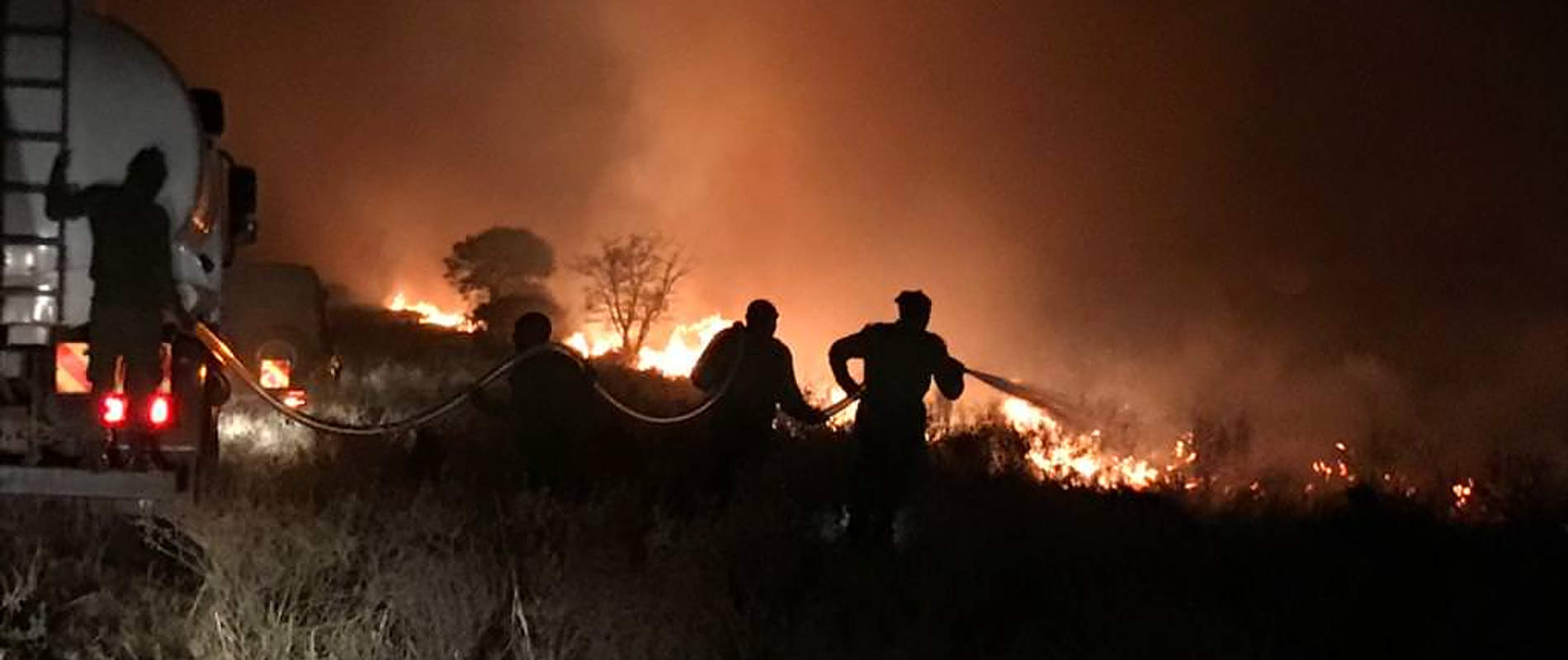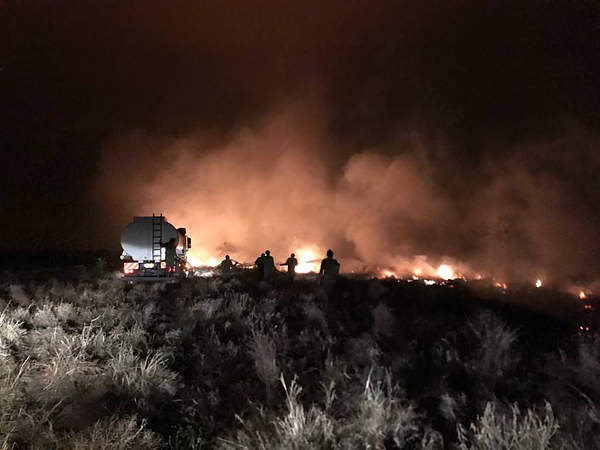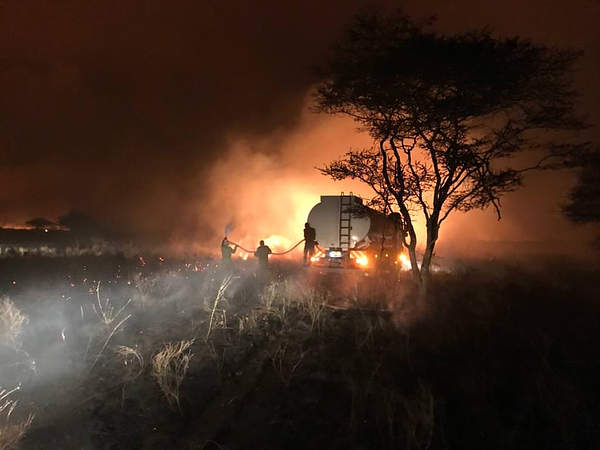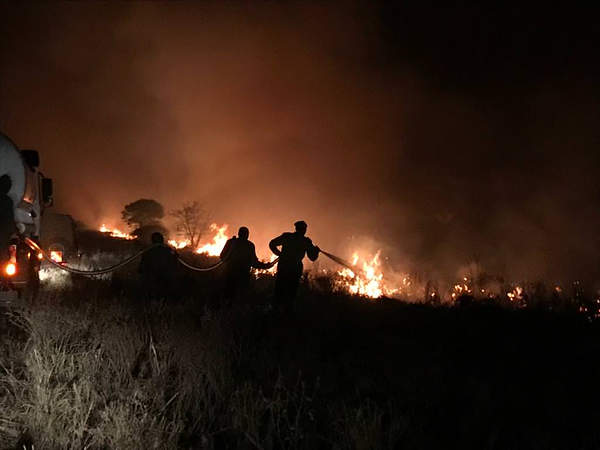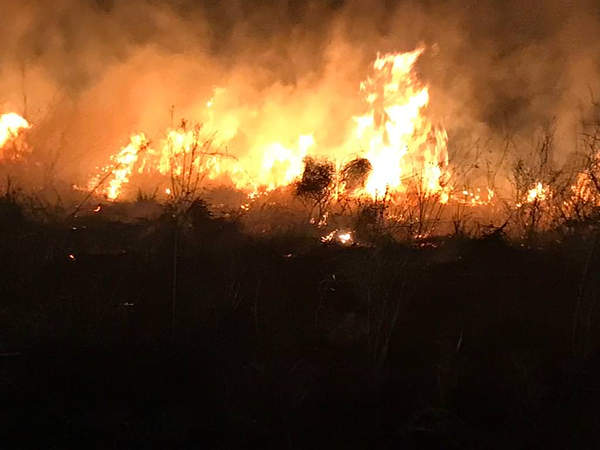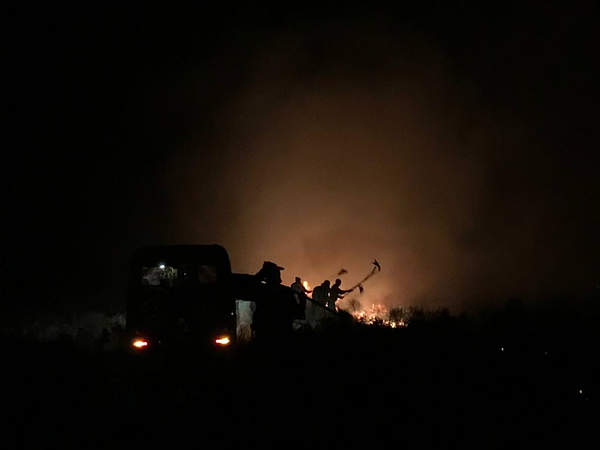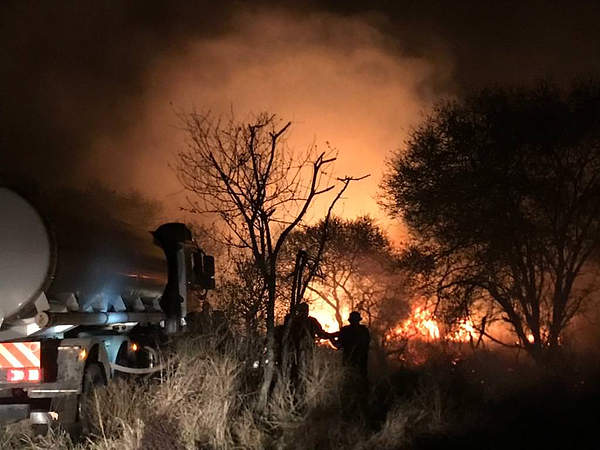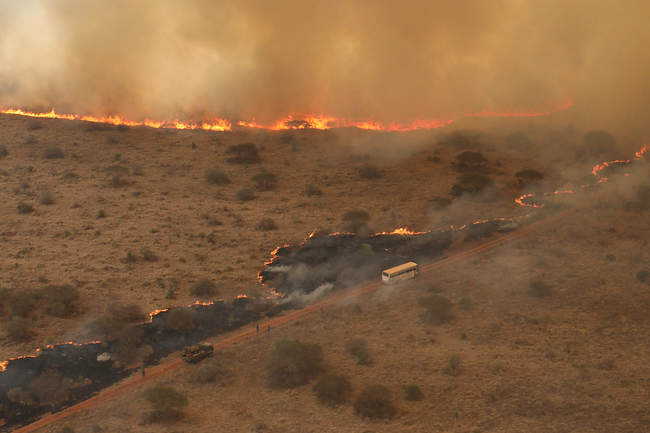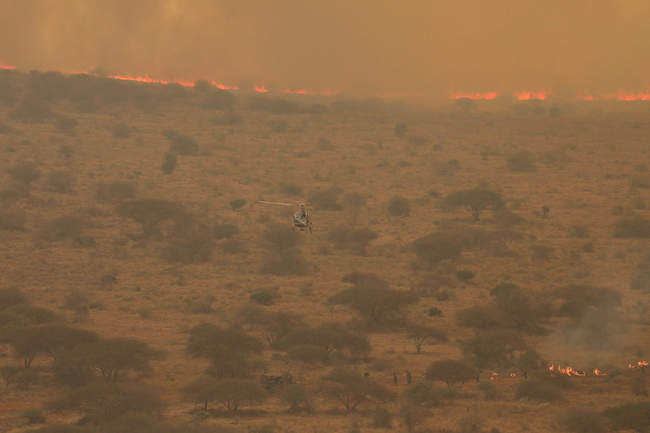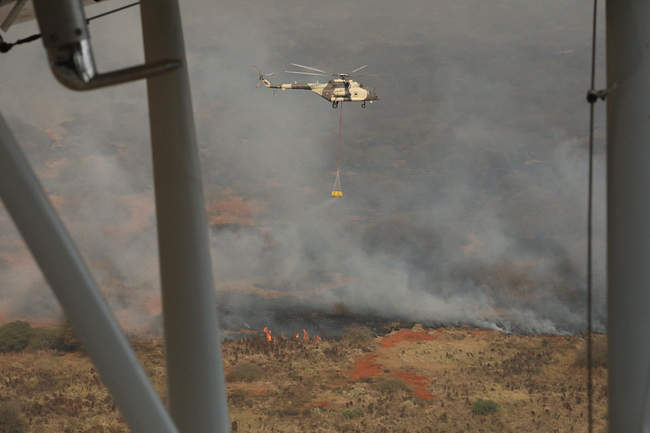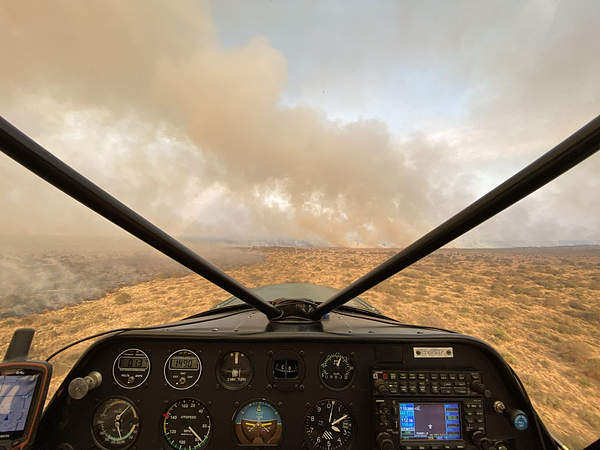On 8th August 2020 the latest of many fires broke out in the Tsavo Ecosystem, along the Maktau-Taveta Rd to the South of Murka. Appearing only a few kilometres from another fire that broke out a few days earlier, it is thought to have been set deliberately, either as a retaliation against the Kenya Wildlife Service or to clear grazing land for cattle to be illegally brought into the National Park.
Upon hearing news of the fire, the SWT quickly deployed an aircraft and multiple teams to help KWS fight the fire on the ground. Unfortunately, strong winds allowed the fire to quickly jump the highway and set a rapid course for Murka Hill. Our ground teams fought throughout the night but were unable to quell the flames.

The following morning, new teams were sent to relieve them and one of our fixed-wing aircraft returned to assess the situation, which was not good. The SWT also sent a helicopter with a Bambi bucket to do water drops. It was, however, quickly apparent that this action would be inadequate against such a large fire. By this point, the fire had formed a large front that stretched several kilometres and required attention in multiple areas.
By mid-morning of Sunday 9th August, the fire had reached Murka Hill and was moving towards a road to the immediate North. Teams were deployed along this road to carrying out backburning ahead of the fire, however, these efforts were too late and before long, the massive fire had managed to leap across the road in two locations and was raging on. SWT pilots were prepared for this and had identified another road several kms north from where a new backburn could be started and hopefully head the fire off in time. The helicopter began the process of landing at each of the teams’ locations and issuing instructions of where to position people to begin the backburn. Dozens of firefighters were rapidly moved into location, and not a second too soon, as the first of the two new fires covered several kilometres in about 1.5 hours before coming up against the backburn and going out. Once this fire was neutralised, more teams were deployed to the West to head off the second fire, which at the time was burning more slowly.

During the course of the day, our planes, limited to 6 hours of fuel each, worked 3 shifts to cover the fire from morning until last light before having to return to base: SWT aircraft flew a total of 24 hours between them that day. Our ground teams remained, along with KWS and teams from Wildlife Works, Taita Estate, National Youth Service, Tsavo Trust, Finch Hattons and other volunteers to fight the fire. Unfortunately, despite everyone’s best efforts, the fire, aided by shifting winds, was able to cross this final road and burn out of the control of the firefighters, and so the battle continues today, Monday 10th August.
Update 13.30 hrs on Monday 10th August 2020: The fire is contained. Teams remain ready to respond should shifting winds change this situation, however, at this time it appears that the unwavering efforts of ground and air personnel over the last two and a half days, from a ream of NGOs, government bodies and volunteer groups, have seen these extensive fires extinguished.
